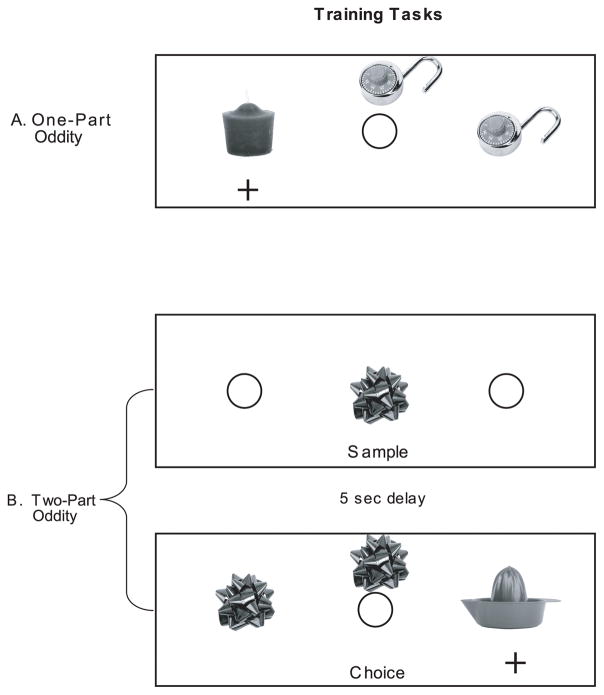Figure 1.
Oddity Training. A) “One-part” oddity: One member of an identical pair is presented behind the central food well. Monkeys are given a choice between the other member of the pair and an “odd” object. Displacing the odd object reveals a reward. B) “Two-part” oddity: One member of the identical pair is presented alone, covering a baited well. The monkey displaces the object to reveal a food reward. The tray is shielded from view and after a 5-sec delay, the displaced object is positioned behind the central well, and its identical pair and an odd object are placed over the lateral wells, in the same manner as for one-part oddity. The animal must select the odd (i.e. “nonmatching”) object. Two-part oddity differs from delayed nonmatching-to-sample in that the monkey is not required to retain the sample in memory. That is, the sample is present at the time of choice.

